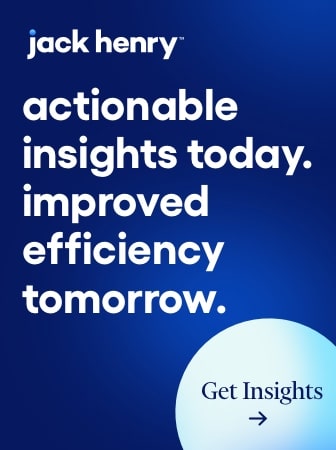The report: 2030 and Beyond: An Unconventional Look at the Future of Fintech
Source: Team8
Why we chose the report: As fintech startups continue to chip away at incumbents’ market share, traditional banks must stay attuned to the evolving competitive landscape and adapt their strategies accordingly. The Financial Brand editorial team chose the Team8 report because its perspective is informed by the venture firm’s active investments in the fintech space and the expertise of its team, which includes ex-execs from Bank Leumi, PayPal, JP Morgan, MasterCard and elsewhere. The report looks at individual case studies, provides cross-analysis data (i.e. a chart showing the federal funds rate vs. available fintech capital) and includes quotes from big names and small to provide context.
Executive Summary
What will the turn of the decade look like in the banking, or in the fintech, world?
To build conviction in an uncertain world, it’s essential to first establish baseline principles. Team8 identifies several longstanding features of financial services that will continue to shape the industry’s trajectory in the years ahead:
Convenience is king: Customers will always gravitate towards the most frictionless experiences, and startups that can deliver superior convenience will have a built-in advantage over slower-moving incumbents.

Modern Customer Journey Mapping
Customers navigate a multi-touch, multi-channel journey before interacting with your brand. Do you deliver successful and seamless experiences at every touchpoint? Download webinar.

The Digital Solution for Prepaid, Incentive and Reward Cards
Join experts from CPI for an informative webinar to learn where digital cards are today and what they will look like in the future.
Read More about The Digital Solution for Prepaid, Incentive and Reward Cards
Regulatory arbitrage is a loser’s game: Attempts to exploit regulatory loopholes are invariably met with regulatory clampdown. Business models predicated on regulatory arbitrage are thus destined to fail.
Incumbency is sticky, luckily: While fintech disruptors can certainly challenge the status quo, incumbent financial institutions enjoy significant structural advantages that make them difficult to dislodge. The most successful fintechs will often be those that collaborate with, rather than seek to overthrow, the incumbents.
Fraud follows the money: Wherever there is economic activity, there will be bad actors looking to exploit it. The arms race between fraudsters and fraud-fighters will remain a permanent feature of the financial landscape.
Read more:
- How Can Banks Win the Fintech War By Defining the JTBD
- Can Banks and Fintechs Learn to Speak the Same Language?
- Decline in Fintech Funding Creates New Opportunities for Banks
What (Likely) Will Change? Probable Pathways for Fintech Evolution
Building on this bedrock, the report then outlines several trends that the authors believe have a high probability of accelerating over the next decade:
Fintech-powered, and financial infrastructure, incumbent “upgrades”: Banks will aggressively adopt fintech-quality technology through partnerships, acquisitions and vendor relationships. The most attractive opportunities will be in building fintech products that can seamlessly embed into incumbents’ existing customer-facing channels.
Here, faster payments and stablecoins stand out as a secondary tier within these “upgrades.” The proliferation of FedNow — in addition to a dollar-backed stablecoin —could change payments for good, and likewise, banking altogether. The advent of real-time payment systems, open banking frameworks and programmable money protocols will unlock opportunities to create novel financial products and experiences.
40Seas, a Team8 portfolio company, provides a useful example of how verticalized fintech platforms are being deployed for SMBs engaged in cross-border trade. Importers and exporters that operate in separate countries must overcome a number of pain points – including payment friction and capital constraints — in order to profitably engage in global commerce. 40Seas offers a digital B2B payment portal that can be seamlessly integrated or embedded into checkout flows, and a data-driven, trade- financing platform that makes it faster, easier, and cheaper for supply chain companies to access working capital, improve cash flow, and achieve better forecasting capabilities.
“When it comes to facilitating cross- border transactions and trade financing for SMEs, legacy finance institutions don’t have the bandwidth to analyze companies at a granular level, leaving SMEs at a significant disadvantage. By rapidly analyzing vast volumes of financial data, AI can be put to work to scalably verify creditworthiness, assess risk, and process financing much more efficiently than traditional banks. Over the next five years, the global trade ecosystem will benefit greatly from more sophisticated and robust cross- border payment and trade financing tools. We may see further integration of smart contracts and CBDCs (Central Bank Digital Currencies) within the cross-border payment space to reduce cross-border payment friction and alleviate global supply chain fragmentation.” — Eyal Moldovan, Co-founder & CEO of 40Seas
B2B fintechs rise to the surface to nab small- and medium-sized business: After years of lagging behind its consumer-focused counterpart, B2B fintech is poised for a breakout in 2024 as startups tackle pain points around speed, certainty, cost and return on assets in commercial payments, trade finance and other areas. Verticalized plays targeting specific industries will be particularly attractive.
The rebundling of financial services: The great unbundling of financial services leading up to and for a couple years post-pandemic, in which mono-line startups attacked individual bank business lines, will give way to a “rebundling phase” as fintechs seek profitability through cross-selling and economies of scale. This re-bundling will create opportunities for orchestration platforms that can stitch together disparate products and services.
An Impending Threat and Opportunity: Big Tech’s Entrance
“Big tech companies represent a particularly dangerous threat to incumbents that have already achieved a significant distribution advantage through their scale. Think of the big banks and the card networks.
As these behemoths battle it out (and attract intense regulatory scrutiny in the process), opportunities are created for smaller players and startups to counterposition against them. For example, as Apple moves further into the world of digital identity and ID verification, there will be a compelling case that can be made for a more decentralized digital identity management solution, which can be sold to banks and regulators as a necessary hedge against Apple’s monopolistic tendencies.
Right or wrong, big tech is an effective punching bag. Clever fintech founders will see this as an opportunity.”
Embedded finance moves down market: While the initial wave of embedded finance largely focused on digitally-native businesses, the next phase of growth will come from bringing financial products to the vast and underserved SMB and consumer markets. This will require new approaches to distribution and underwriting.
Planning for Low-Probability, High-Impact Scenarios
Finally, the authors indulge in some “long-shot” scenario planning, envisioning several unlikely but potentially transformative developments:
Climate concerns reset incentives: If the intensifying climate crisis leads consumers and regulators to demand that banks optimize for carbon impact, it could trigger a wholesale re-architecting of financial products, distribution models and success metrics.
The Big Prediction
“Consumers’ concerns regarding climate change and the environment lead to a significant realignment in incentives for businesses and financial services providers.”
Generative AI disrupts cost curves: The maturation of generative AI technologies, powered by large language models, could enable incumbents to automate and augment back-office functions so dramatically as to nullify fintechs’ efficiency advantages.
The Big Prediction
“Large language models and the applications built on top of them create extraordinary productivity gains and cost savings for banks and insurance companies.”
Financial services gets immersive: As virtual and augmented reality gain mainstream adoption, financial services could become re-imagined as hyper-personalized, context-aware, “embedded-everywhere” experiences.
The Big Prediction
“Identity credentials become digital by default, empowering consumers to transact more seamlessly and to more effectively protect themselves against fraudsters.”
Self-sovereign finance goes mainstream: A crisis of trust in centralized data and asset custodians, combined with the spread of crypto-native alternatives, could lead to a world in which individuals reclaim control over their financial identities and activities.

The Bigger Picture
While the future of fintech is impossible to predict with perfect foresight, one thing is certain: the industry’s capacity for innovation is boundless, and its ultimate impact will be measured not in quarters or years, but in decades and generations. The companies being built today are laying the groundwork for a financial system that is more inclusive, more efficient, and more attuned to the needs of its users than ever before. It’s an exciting time to be a builder in fintech – and Team8’s report is an essential companion for the journey ahead.
Editor’s note: This article was prepared with AI language software and edited for clarity and accuracy by The Financial Brand editorial team.







